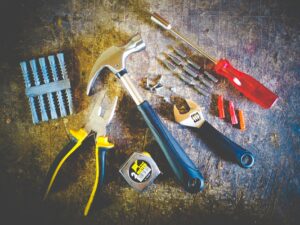Table of Contents
Definition
The quality of a product or service defines how aptly it fulfills its intended purpose. Quality is a relative and somewhat subjective term. Its interpretation varies from person to person.
The ISO 8402-1986 standard defines quality as:
“The totality of features and characteristics of a product or service that bears its ability to satisfy stated or implied needs.”
Let me give an example. If you go to a roadside restaurant, basic hygiene, tasty food, and affordable food are stated needs but if he offers you a table and chair to sit, it surpasses your expectations and you like it. These can be called implied needs.
It is very important to understand implied needs in the above-stated definition. Stated needs are the specifications defined by the customer but implied needs are things or requirements beyond specifications.
Quality is generally not used in absolute form but in relative form.Let me give you an example.
There are two suppliers of the same product, supplier A and supplier B.Products provided by either Supplier A or Supplier B is not defective free but Supplier A products have less number of defectives per lot as compared to Products supplied by Supplier B. In this case, supplier A has a better quality product than supplier B.Important point is products supplied by Supplier A are not defect-free but relatively better as compared to Supplier B supplies.
The term quality can be expressed in terms of a mathematical expression as well.
Quality = Performance/Customer Expectation
Case 1 : Quality is Exceptional if Performance is greater than customer expectations
Case 2 : Quality is Satisfactory if performance is equal to customer expectations.
Case 3 : Quality needs improvement if performance is equal to customer expectations.
It is very important to understand various dimensions of Quality at this stage. These are various dimensions of quality over which we can judge quality as a parameter.
Dimensions of Product Quality
Performance
Performance refers to a product or service’s intended purpose. It basically refers to the product or service’s primary operating characteristics. For Example primary function of a pen to dispense ink on paper flawlessly when we right. That’s it, no other feature or function is required for it to be called a pen.
Performance is one of the most objective parameters to evaluate product quality. Some performance standards are based on subjective preferences, but the preferences are so universal that they have the force of an objective standard.
Features
Features are additional characteristics that enhance the appeal of the product or service to the user.Features are the “bells and whistles” of products and services, those characteristics that supplement their basic functioning.
Let us again take the example of the pen. Grip for better holding, Flamboyant colors for making it look good is all just features. Other Examples include free drinks on a plane, permanent-press cycles on a washing machine, and automatic tuners on a color television set.
The line separating primary performance characteristics from secondary features is often difficult to draw. But the best method to find out if it is a feature or performance characteristic is to negate it and see if the product or service still fulfills its purpose. If it does its feature and not performance characteristic.
Reliability
Reliability is defined as the probability that a product, system, or service will perform its intended function adequately for a specified period of time, or will operate in a defined environment without failure.Among the most common measures of reliability are the mean time to first failure, the mean time between failures, and the failure rate per unit time.
To take an example, let us think of car brakes. It’s a very critical component, someone’s life depends on it functioning properly. Whether it stops the car whenever brakes are applied(over decided life of brakes) is what depicts brakes reliability.
Reliability is a major contributor to brand or company image and is considered a fundamental dimension of quality by most end-users.
Conformance
Every product or service has certain specifications.These specifications can be dimensions or purity,etc.Specifications are tolerance bands with central value called as nominal value.For the most part, dispersion within specification limits is ignored.Conformance is the measure of how well a product is controlled within specification.
The conformance dimension is closely related to the performance dimension. Most of the dimensions or standards are defined to make sure the product performs its intended function.
For Example, One of the operating characteristics of a laptop bag is that the laptop shall properly fit in the bag. The laptop will fit properly if the Laptop bag pocket size is controlled within a specification. This is where conformance comes in place.
Durability
Durability measures the length of a product’s life.If you buy a mobile charger you want it to last at least 1000 cycles or more before it goes dead.In short we want our products or services to last at least a certain period.
Durability is closely related to warranty. Requirements for product durability are often included within purchase contracts and specifications.
Nowadays,warranty period is one of the most important parameters to consider while making any purchase.More the warranty more is the perceived better quality.Hence durability has become a very important dimension of Quality.
Serviceability
Serviceability is the speed with which the product can be put back into service when it breaks down.
Would you like it if it takes a minimum of 10 days to repair any minor or major breakdown in your car.No, you would like it to be rectified in minutes or a few hours at max.
Lower the rectification time better is the serviceability.In Fact one of the reasons why electric vehicles are becoming popular these days is lower maintenance cost and lesser mechanical breakdowns in Electric Vehicles.
Aesthetics
Would you buy a car which has good mileage,does not breakdown frequently but at the same time does not look good,makes heavy noise and smells like burnt rubber? No right!
The aesthetic properties of a product contribute to a company’s or brand’s identity.Making it altogether more relevant in today’s time.
Perceived Quality
Perception is reality. The product or service may possess adequate or even superior dimensions of quality but still fall victim to the negative customer or public perceptions.
As an example, a high-quality product may get a reputation for being low quality based on poor service by installation or field technicians. If the product is not installed or maintained properly and fails as a result, the failure is often associated with the product’s quality rather than the quality of the service it receives.
Dimensions of Service Quality
Timeliness
Timeliness means service is provided within a specified time frame or timeframe mutually agreed upon between service provider and customer.
Providing service within a specified timeline is of utter importance. Let me give you an example.Suppose today it’s your friend’s birthday and you ordered a cake to celebrate the same. The cake arrived one day after your friend’s birthday. Would you order from the same seller ever again.No you won’t!
Hence, timeliness is a very important dimension of quality of any service.
Completeness
Completeness is the proportion of task status against the potential of “100% complete”.Ideal situation is 100% completion.
Repeat customers act as accelerator paddle for any business’s growth.Delivering partial services are not going to attract repeat customers.
For example, if you need help in immigration and you opt for immigration consultant services. Will you be satisfied if immigration consultants leave you halfway through and your immigration is not completed. What would you feel like? I know the word you are looking for is “devastated”.
Hence it is very important that as a service provider you get things done 100%.In Fact in services scale of judgement is binomial.Either its done or not.
Consistency
Consistency means absence of difference, when comparing two or more representations of a thing against a definition.
Life is boring if it’s predictable but it’s quite the opposite in case of services.Customers love it when your service is predictable.
It does not matter if you order Mcdonald’s in the USA or UK.You would find the same taste across all Mcdonald’s outlets throughout the world and people love it.
Accessibility
Accessibility in simple terms is the amount of effort one has to put in to find you. It could be physically or digitally.
Maruti Suzuki is India’s largest car manufacturer. One of the reasons Maruti has been able to retain its top spot for all these years is its strong service network. There is hardly any city or village in India where you won’t find Maruti Service station.
As per maruti official data,Maruti has service stations more than double the number of service stations number two OEM has.Yes it’s true!
Accuracy
Accuracy in literal terms means closeness to the center point or target point.In terms of services accuracy is how close it is to the customer expectation.
People love speedy service but not at the cost of accuracy.How would you feel if your courier partner delivers your package in less than a day but to the wrong address?Devastated right?
Accuracy is a very important dimension of quality of service and shall be given a proper attention while designing or providing any service.
Convenience
We human beings love convenience. If you see our purchasing patterns depict our love for convenience. We are shifting from brick-and-mortar stores to online just because of the convenience online shopping offers.
Nowadays you must have noticed an obsession of tech startups towards reducing the number of clicks for accessing their services. The lesser the number of clicks more convenient is the process.
That’s why it’s so vitally important for business owners to realize that the easier they make things for their customers, the more successful their businesses are bound to be. Making convenience an important dimension of quality.
Responsiveness
Responsiveness is the time you or your support team take to respond to customer queries.
If it takes 5 days for you to respond to customer email, it’s very difficult to retain customers in such scenarios.
I personally hate waiting, when I call customer care, and listening to their dial tone even for 5 minutes.I guess we all hate it.
In today’s world, you need to be responsive and mindful of your customer queries if you want to build a sustainable business.
It is important to note that all the quality dimensions we have discussed are independent of each other. One quality dimension can be excellent but at the same time, another dimension could be average. The goal should be to score well on all dimensions.
Why is quality important for an organization?
“Quality is the result of a carefully constructed cultural environment. It has to be the fabric of the organization, not part of the fabric.” Philip B Crosby
Quality is important for an organization from multi standpoints. I have explained below the most important, as per my understanding, reasons for the need for Quality.
Customer Satisfaction
One of the most important characteristics contributing to customer satisfaction is the quality of product or service supplied.
If we look at any business, one of the main motives that drive the business is customer satisfaction and the customer is satisfied if their requirements are met.
Also, Nowadays end consumers have become very intelligent. So the price is not the only criteria for their product selection. Rather quality factor has taken over the price factor as the most important factor for consumer product selection.
Also good quality means lesser customer complaints or returns,hence more customer satisfaction.
Predictable Business Growth
In today’s manufacturing world customers understand the cost of shifting suppliers. So if customer needs are met in a consistent and satisfactory way, they like to stick to the same product or service source.
Lack of fear of customer shift provides stable and predictable growth. One can confidently plan business expansion in such scenarios.
Less cost in long term
Maintaining quality might be a costly affair in the short term but in long term this investment reaps wonderful returns.
Improved product or process quality help reduce product as well as process cost.Poor Quality causes lots of rework,that indeed contributes to wasted time and resources.
Studies show a strong positive association between quality and profitability. In fact, high quality produces a higher return on investment (ROI) for any given market share. According to MIT Sloan Management Review, having fewer defects or field failures results in lower manufacturing and service costs, and as long as these gains exceed any increase in expenditures by the firm on defect prevention, profitability will improve. In addition, improvements in performance, features or other dimensions of quality lead to increased sales and larger market shares.
Zero Cost Marketing
Most people trust recommendations from friends and family above all other forms of advertising when making a purchase decision.This makes word of mouth marketing the most powerful and effective channel of marketing.
Recommendations come only if you meet your customer’s quality expectations.So it becomes important that quality standards are not only met but also exceeds expectations.
Who is responsible for Quality?
This is a very controversial topic. Although everyone in the organization is responsible for the quality of products, services, and conduct, there is a slight twist.
The twist is that personals shall be equipped with the required resources before we expect them to depict quality. There shall be properly defined standards from management, for which a person can be held accountable.
If someone gives you a broken broom and ask you for world class cleaning.Would you be able to deliver?No nobody could.
Moreover, it is still not enough to just define standards and provide resources. It is important to provide training to use those resources effectively and instructions to follow defined standards.
Take the same example of floor cleaning. If someone doesn’t know how to hold a broom and you keep on asking them to clean the floor. Would they do a fine job? No, absolutely not.
Once you provide them resources,define standards and provide training,you can hold them accountable for adherence to those standards to maintain quality.
To say the quality is everyone’s responsibility is a confusing statement if considered in isolation. We all know if everyone is responsible, it actually means no one is responsible. So more logical statement would be that “everyone is responsible for quality if they are provided required resources, standards, and training.”
I have been working in the field of quality for the last 10 years and one thing I can tell you with 100% confidence is that quality culture flows from top to bottom and never the other way around.
Quality management
There are many aspects of quality in a business context, though primary is the idea that business produces something, whether it be a physical good or a particular service. These goods and/or services and how they are produced involve many types of processes, procedures, equipment, personnel, and investments, which all fall under the quality umbrella. Key aspects of quality and how it’s diffused throughout the business are rooted in the concept of quality management.
Quality management is the act of overseeing all activities and tasks that must be accomplished to maintain a desired level of excellence. This includes the determination of a quality policy, creating and implementing quality planning and assurance, and quality control and quality improvement.
Long Term success of any organization is based on customer satisfaction and loyalty.Quality management helps achieve that.
Quality management has four wheels that drives it.Those are as follows:
- Quality planning
- Quality assurance or QA
- Quality control or QC
- Quality improvement or QI

Prerequisite to improve Quality?
Team Approach
Quality improvement is not a one man’s job,it’s a team effort.If you are expecting quality improvement to be undertaken by one individual,you are in a utopian state.
Quality improvement needs a team approach,one man or woman can’t improve quality.Quality improvement needs cross functional team approach.Member from each discipline shall be a part of the team and shall bring in multiple perspectives to the table.
Understanding Cost of Quality
COQ means quality has its cost. It is fundamentally important that people in your organization understand the concept of cost of quality.
The cost of Quality varies depending on the stage it is taken care of. Fixing a problem at the design stage, for example, is much cheaper than fixing it in production, and fixing it in production is massively cheaper than fixing it once it’s gone out the door.
It is essential that the manufacturing staff be trained to understand the cost multipliers involved with warranty repair or replacement and the cost of a damaged reputation.
Being resourceful
Quality improvement needs deployment of resources. You can’t write in air, you need a pen and paper.
It is the responsibility of the management to make sure that required resources are provided to the team.
But at the same time it is important that we are resourceful in using those resources.What i mean is that we have to make efficient use of available resources.
Top Management commitment
I have seen multiple organisations fail in effective implementation of Quality Management System.And the only reason for failure of implementation is lack of management commitment.
And by top management commitment,I don’t mean just issuing a mission,vision statement.It includes providing resources,imparting required competencies,defining processes, defining measurable targets ,monitoring on regular intervals and building a culture of problem solving.
Invest in Training
If i don’t know how to drive a car and you keep on asking me to drive a car.It would not help me drive the car.I shall be trained in how to drive a car.Once i have learned how to drive then only you could expect me to drive the car.
Importance of training has become altogether more important these days,considering new technologies disrupting old technologies faster than ever.Your team shall be equipped with the latest tools and tricks to perform in an efficient manner.
Investing in improving team skills is an investment you won’t regret.
Problem Solving Mindset
Problems shall be seen as a challenge not as a burden.Problems are opportunities to improve quality.
One thing is for sure you can’t expect to solve problems on a regular basis if your team does not have a problem-solving mindset.
By problem solving mindset,I mean taking problems with a positive frame of mind.I know it sounds counterintuitive but it’s not.If you treat a problem with a negative frame of mind,we try to cut corners and that problem is never resolved.
Positive frame of mind brings in the clarity required to solve problems permanently.
Strong QMS
A quality management system (QMS) is defined as a formalized system that documents processes, procedures, and responsibilities for achieving quality policies and objectives.
QMS acts as a roadmap to your organization’s success. Let’s imagine you are standing at a railway station and you don’t know your destination. Will you be able to reach your destination ever? No right!
QMS helps you keep on track and helps find you areas of improvement.
It is important to understand that improvement can only be done if you have all the relevant data.And strong QMS puts in place a good data collection mechanism at any organizational level.
Technology integration
In current times if you are not using technology for quality improvement.There are chances that you will be left behind in the long term.
Use of IOT for machine data monitoring is an amazing example.At a relatively very small price now you can monitor operations data of any machine using IOT integrations.
Data fetched helps in an unimaginable way.We can find OEE,productivity,etc in real time and act upon it without any lag,applicable in all manual systems.Trend to shift from Preventive to predictive maintenance is one more example of how technology is helping us in improving quality of our daily operations.
Strategies to improve Quality?
There are multiple strategies one can follow to improve quality. Before we move any further it is important to understand that quality improvement is not a one-time activity but a continuous process. It’s like going to the gym. You have to do exercise not only to build muscle but to maintain it as well.
Following are the quality improvement strategies.
- PDCA or PDSA: PDCA stands for Plan Do Check Act and PDCA stands for Plan Do Study Act. PDCA or PDSA is an iterative four-step management method used in business for the control and continuous improvement of processes and products. It is also called Deming’s cycle.
- FADE: FADE is also a four-step process. F in FADE stands for Focus. A in FADE stands for Analyze, D in FADE stands for develop and E in FADE stands for Evaluate. The FADE model was developed by Consulting Firm Organizational Dynamics Institute, Wakefield.
- Six Sigma Strategy: It is a very important method of Quality Improvement. The term ‘Six Sigma’ is derived from the Greek letter, Sigma which denotes the standard deviation of time from the mean. Six sigma is a five-stage process DMAIC.DMAIC stands for Define Measure, Analyze, Improve, and Control. This method was developed by Motorola company.
- Total Quality Management: A core definition of total quality management (TQM) describes a management approach to long-term success through customer satisfaction. In a TQM effort, all members of an organization participate in improving processes, products, services, and the culture in which they work.






